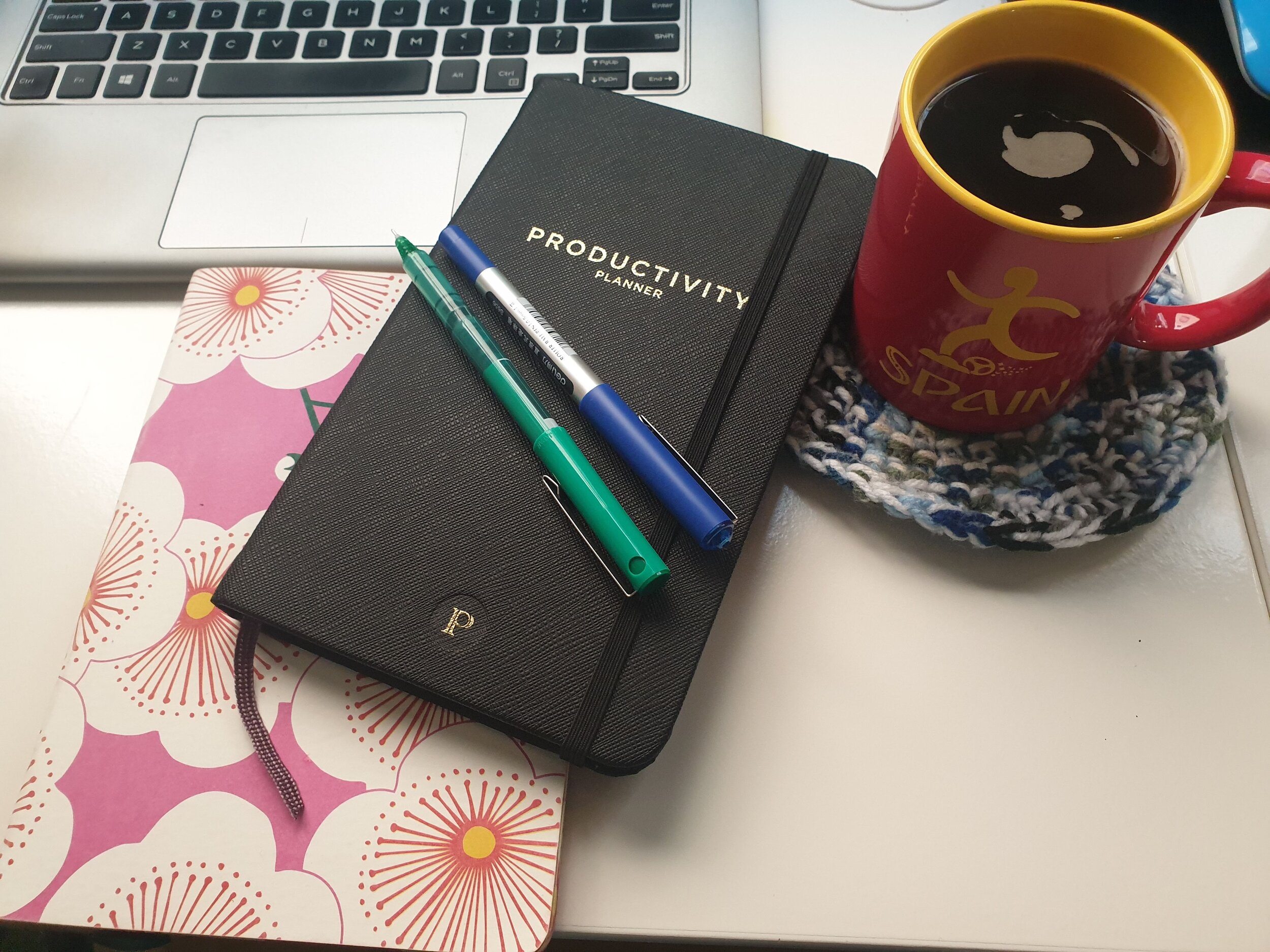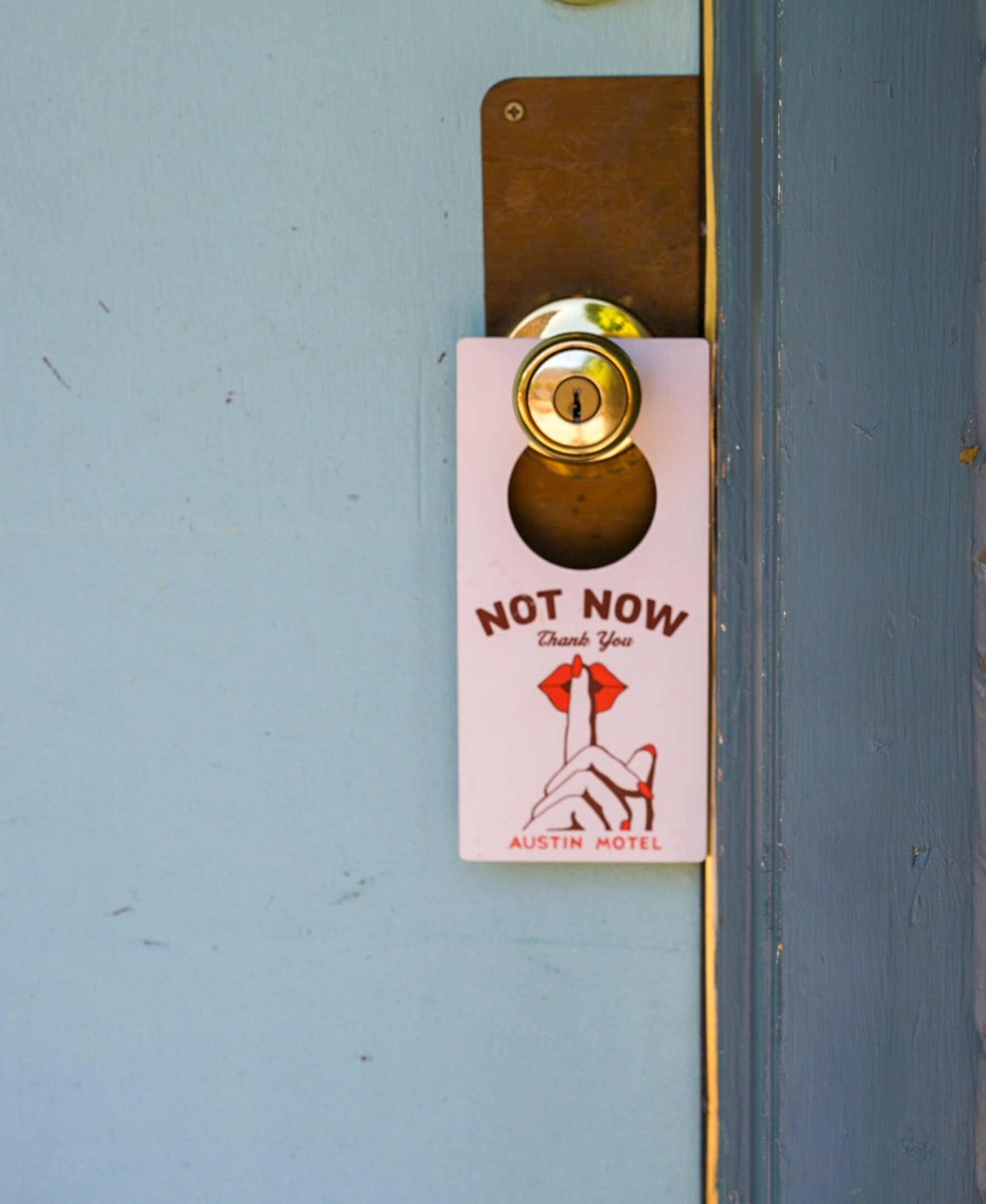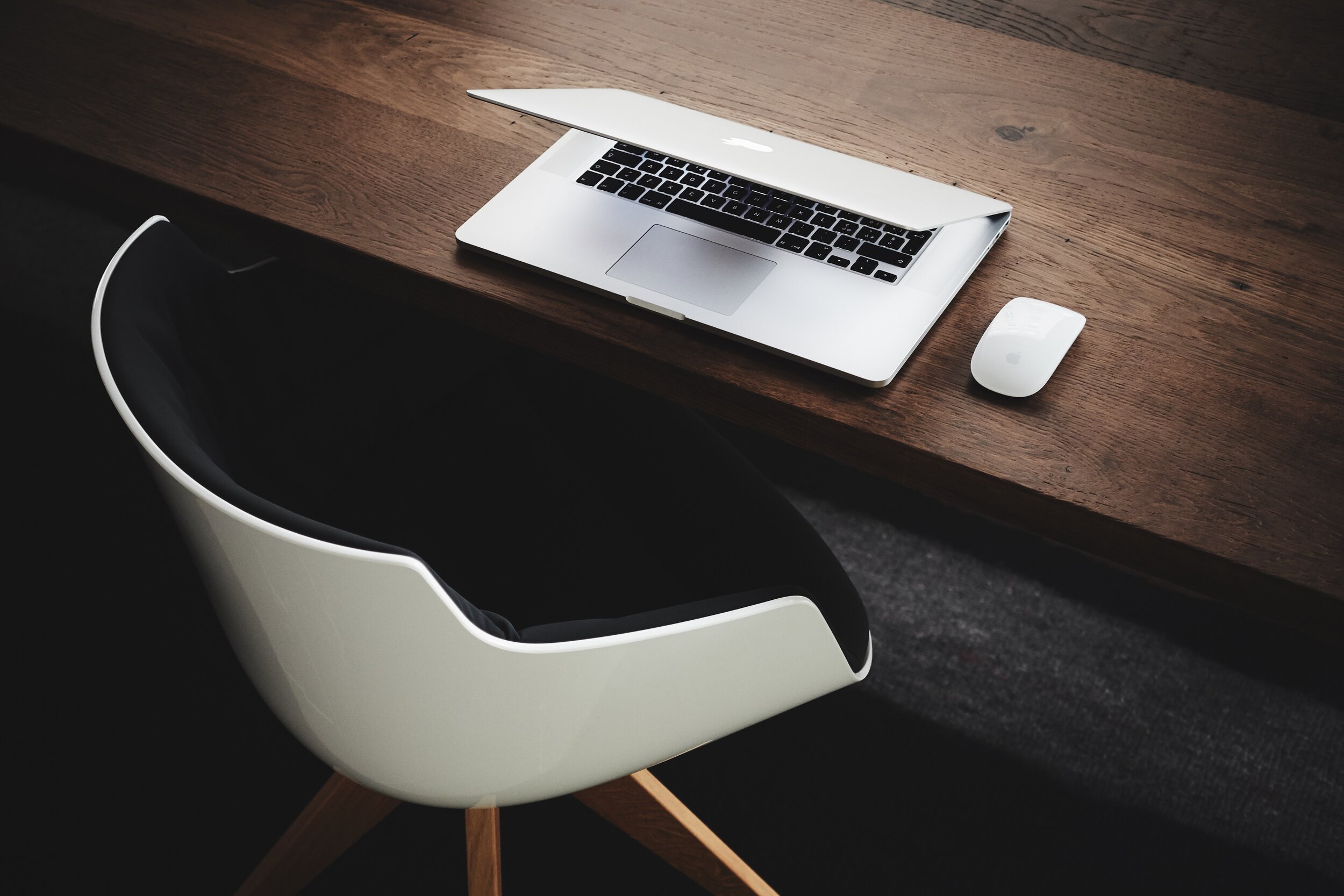
How to: Work from Home Effectively
Dear Sina,
In the wake of the COVID-19 pandemic many of us are being told (either suggestively or by law) to avoid unnecessary trips outside our houses and, specifically, to work from home. However, this is not necessarily something that you are used to doing and, while it may seem straightforward, there are a lot of distractions and pitfalls of doing so that you may not be prepared for. That’s why today we’d like to take the time to talk through some tips and tricks for ensuring that your day of work is equally as productive now that you’re working from home.
If you are fortunate enough to have a job that can be carried out from home, first off we would like to encourage you to take a moment of gratitude because you’re really fortunate to have this possibility. At the same time, no one said it was going to be easy to stay on-task with all of the comforts and responsibilities of being at home.
 Here are some suggestions that have really helped us:
Here are some suggestions that have really helped us:
1.) Maintain a normal schedule: Sleeping in can be a major benefit of working from home, but don’t let it get out of hand! If you’re used to needing an hour every morning to commute to work, consider waking up at the same time and instead putting that hour towards a healthy morning routine (see number 2). Or, if you could really use the sleep, take that time to catch some extra zzz’s—but don’t take MORE time than that. Holding yourself to the same start time will help you maintain your focus throughout the day and enable you to stop at a reasonable time as well.
Alternatively: If you know that you’re actually someone who truly thinks and works better later in the day—and your work is not business-hour-sensitive—this may be the time to take advantage of working at your most effective hours. Simply be aware that if you choose to do this it may affect your routine / family life if you’re living with others.
2.) Build a healthy morning routine: Basically all successful people subscribe to the idea that a consistent morning routine is necessary to be effective. However, you may never have felt like you had time to do this in the past. Now that you’re working from home, put your flexibility to good use. You might want to wake up at the same time as usual and put all that extra time towards practicing yoga, meditating, journaling, exercising, and/or reading in addition to the normal things you would do.
Starting out your day with any of these things is going to put you in a good headspace but don’t start out trying to do them all! Depending on how much time you allow for your morning routine, incorporating just one or two to begin with would be advisable. In fact, we’ve been proponents of the morning routine for years and we still only incorporate two of these each into our routines.
 3.) Eat a hearty breakfast: It’s tempting, when working from home, to skip breakfast with the knowledge that you can stop for a snack whenever you want. Of course, it is natural and advisable to take breaks when needed but starting your day already knowing that you haven’t fully prepared to work for a few hours is setting yourself up for disaster. Eat as much as you normally would if you were going to an office (where you might not have the luxury of stopping for breakfast half an hour later). Keeping some snacks in your work area is also a good idea to avoid going to the kitchen, losing your focus, and transitioning to doing “just one small housekeeping task.”
3.) Eat a hearty breakfast: It’s tempting, when working from home, to skip breakfast with the knowledge that you can stop for a snack whenever you want. Of course, it is natural and advisable to take breaks when needed but starting your day already knowing that you haven’t fully prepared to work for a few hours is setting yourself up for disaster. Eat as much as you normally would if you were going to an office (where you might not have the luxury of stopping for breakfast half an hour later). Keeping some snacks in your work area is also a good idea to avoid going to the kitchen, losing your focus, and transitioning to doing “just one small housekeeping task.”
4.) Dress for success: This is a tip that is easy to overlook but can make all the difference. Many people think a great benefit of working from home is being able to work in your pajamas but this is a surefire way to be ineffective. Getting showered, dressed, and groomed in the morning is something we might think we do for the benefit of other people but it also has a positive association in our own brains. We stay in our PJs or sweats on the weekends and evenings when we just want to relax; we wear ‘real clothes’ when we want to get work done.
Ensure you’re giving your subconscious mind this trigger and “dress for success” in whatever way makes most sense to you. This could mean anything from showering and putting on your business casual to simply brushing your hair and whisking on some mascara to merely changing into different comfy clothes than what you wore to bed. No matter what extent you take this to, take off the pajamas you woke up in!
5.) Use triggers: Along the same lines of changing your clothes, it’s useful to incorporate different triggers into your routine in order to teach yourself a differentiation between ‘home’ and ‘work.’ It’s very difficult to separate the two when they actually happen in the same place so the best case scenario is to have an office space that is separated from the rest of the house. Physically being able to close a door on the rest of your home can transport you easily into work mode. However, if you don’t have this option we have some other tricks that have worked for us.
If you’re able to designate a certain area of your dining room or living room as ‘work-only’ that would be similarly effective. Sit only in that area when you are working—don’t answer work emails from the kitchen, don’t carry your laptop over to the couch, and, most importantly, never do any work from bed!! When Dani was living in a one-bedroom apartment she really didn’t have any way of sectioning off a workspace and so she used different lighting as her trigger. At any point she was working, she would use the bright overhead light in her living room. When she transitions to simply “being at home” she would switch this off in favor of the subdued lamp lighting. Wearing shoes during your working hours and switching into slippers otherwise is another trigger that might work for you.
 6.) Organize yourself and your work: There are different means and methods that have varying results for different people but try to find a means of organization that works best for you. Use a daily planner—we personally prefer this to be a physical book rather than a piece of our technology—or another means of maintaining a checklist of daily tasks. It is not only helpful to have a written list of your plans and goals for the day to enable you to stay on-task but it also provides a sense of accomplishment each and every time you check something off. Right now, Dani is finding the Productivity Planner to be particularly useful.
6.) Organize yourself and your work: There are different means and methods that have varying results for different people but try to find a means of organization that works best for you. Use a daily planner—we personally prefer this to be a physical book rather than a piece of our technology—or another means of maintaining a checklist of daily tasks. It is not only helpful to have a written list of your plans and goals for the day to enable you to stay on-task but it also provides a sense of accomplishment each and every time you check something off. Right now, Dani is finding the Productivity Planner to be particularly useful.
You should also play around with different organizational methods when it comes to planning out and executing your tasks. Some people believe in time-batching in which you ‘batch’ similar tasks and focus solely on those for an extended period of time. Others prefer to use the Pomodoro Technique, which calls for quick 25-minute sessions with 5-minute breaks in between. You’ll have to figure out a system that works well for you, but once you find it, honor and stick to that plan.
7.) Use lunchtime as a break from work: Especially if you come from a country where the live-to-work mentality is strong it can be really tempting to make yourself a sandwich and then plop right back down at your computer to work. We would recommend avoiding this tendency and treating yourself to a true break at lunchtime. Personally, we like to spend some time in the kitchen cooking from scratch while listening to a podcast but this is perhaps more fitting for the Spanish lifestyle where lunch is the most important meal of the day. You might prefer to put together something quickly but you should still take the time to sit down at your table or couch and disconnect for a bit.
Over lunch you might enjoy conversation with anyone else you live with, watch a bit of TV, read, or sit outside and take in some sun if you have the space to do so. This break doesn’t have to be all that long, but it should be respected. Try not to compromise and read through work reports OR watch an extra two episodes of your show “just this once” as that’s how bad habits form.
 8.) Set boundaries with others at home with you: Something that may be particularly relevant at this time is trying to share your workspace with other members of your family or roommates. Even though you are all now at home doesn’t mean that you can’t maintain work hours during which you are focused and uninterrupted. From the onset of the shift to working from home be sure to sit down with anyone you share a home with and talk through some rules and guidelines. Let others know what you think your schedule will be like (and that you will keep them posted if this changes) and when you plan to take breaks, the latter part being when you are available to them.
8.) Set boundaries with others at home with you: Something that may be particularly relevant at this time is trying to share your workspace with other members of your family or roommates. Even though you are all now at home doesn’t mean that you can’t maintain work hours during which you are focused and uninterrupted. From the onset of the shift to working from home be sure to sit down with anyone you share a home with and talk through some rules and guidelines. Let others know what you think your schedule will be like (and that you will keep them posted if this changes) and when you plan to take breaks, the latter part being when you are available to them.
Make sure that everyone knows and understands your triggers and is therefore able to respect them as well. You may decide that you can leave your office door cracked open most of the time but when it is shut it should be interpreted as a “Do Not Disturb” sign. Alternatively, this could be a time-based system and you could ask friends and family not to interrupt you between certain hours. Of course, there may be emergencies when you will need to allow interruptions but setting guidelines for what constitutes an ‘emergency’ is crucial to everyone’s effectiveness. An overflowing toilet bowl is rather obviously an emergency and a funny meme is rather obviously not, but where do things like phone calls and doorbells fall into your definition?
9.) Get good at video-conferencing: One very important aspect of working for home will be keeping touch with your colleagues, clients, and anyone else you need to work with. Speaking with these people over video-calls (such as through Skype, Zoom, or Webex) is an effective way to maintain relations that feels like you’re still having in-person conversation. However, it’s important you respect these video-conferences in the same way that you would were they meetings held in an office.
Create a clean, well-lit, and professional space to sit in during these calls. Even if you don’t have a separate room for an office in your house you can create the illusion that you do by getting off the couch and sitting with your back to a wall (rather than an open area of the room where people may walk past and create distractions). Also ensure that others you live with know when your video-conferences will happen and therefore are even more cognizant to avoid interrupting you at this time.
 10.) Maintain an end-of-workday time and/or routine: Perhaps the most overlooked tip when it comes to working from home, this is something that is incredibly important. Make sure your work day does, in fact, end at some point! It’s unhealthy for you to carry on working around the clock but it is really easy to slip into the habit of doing so if you don’t have a clear end-time or routine. In order to ensure you can give 100% of your attention during working hours, you need to shut off 100% when you are NOT in working mode.
10.) Maintain an end-of-workday time and/or routine: Perhaps the most overlooked tip when it comes to working from home, this is something that is incredibly important. Make sure your work day does, in fact, end at some point! It’s unhealthy for you to carry on working around the clock but it is really easy to slip into the habit of doing so if you don’t have a clear end-time or routine. In order to ensure you can give 100% of your attention during working hours, you need to shut off 100% when you are NOT in working mode.
Ideally, set a consistent ‘end-of-workday time’ and check in with yourself throughout the day to see if you are on track to finish by that time. If your work is less predictable and/or will require long hours on certain days you can be inconsistent with the time but not the routine. Whenever you do finish your work for the day, shut down your computer, walk away from your workspace, and switch any of the other triggers we discussed in number 5. Once you do so, treat it as if you have truly left the office and don’t go back to “check just one thing.” You are ‘home’ now and you owe it to yourself to stay in that headspace.
Some Final Thoughts
In case you didn’t pick up on this when reading through our list, a lot of effectively working from home requires you to “decide what’s best for you.” This means that you will likely need to try a few different methods (i.e. different variations of the above suggestions) before you hit the one that works for you and THAT’S OKAY. You are not expected to know how to do this effectively from day one. However, you are responsible for being honest with yourself and planning your day as effectively as possible.
You may like the idea of sleeping in and therefore say that you work effectively in the evening. However, if less things are getting checked off your list than were before (during your normal working hours), then that might not be the truth. You might think you’re doing the right thing by maintaining a morning routine but if it gets so long that you’re not sitting down to work until noon, you may likely be doing yourself a disservice instead. Listen to your gut but also check in with your to-do lists, energy levels, and overall satisfaction. With time, you’ll find the right balance that suits you!
Let us know if these tips help you and if you have any specific doubts we could talk you through. Also comment with any of your own working from home tips if you have habits other than those on this list that you find helpful.
Sincerely,
Spain
P.S. Are you currently in Spain and feeling nervous about the Coronavirus situation? Or perhaps you have a loved one in Spain and you’re worried about the current state of affairs while you’re so far away from each other? We’re here to talk if you need some support! Check out our coaching page for information on our currently free 20-minute sessions for this purpose.




